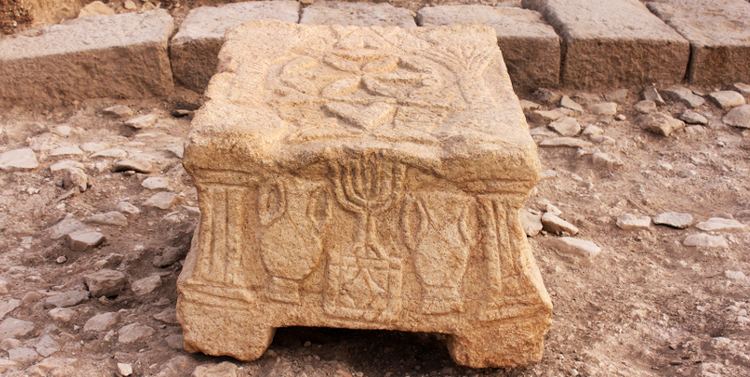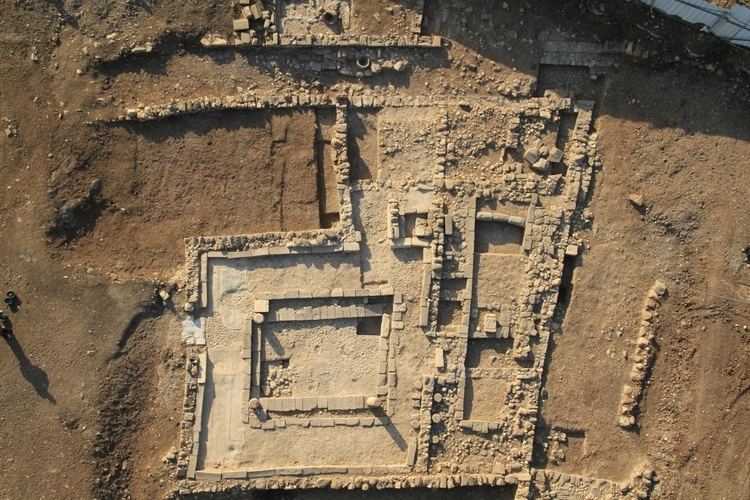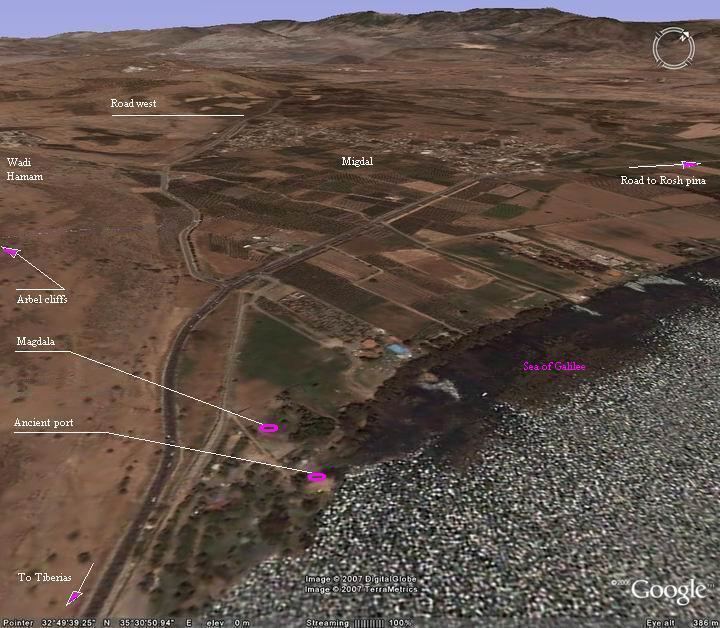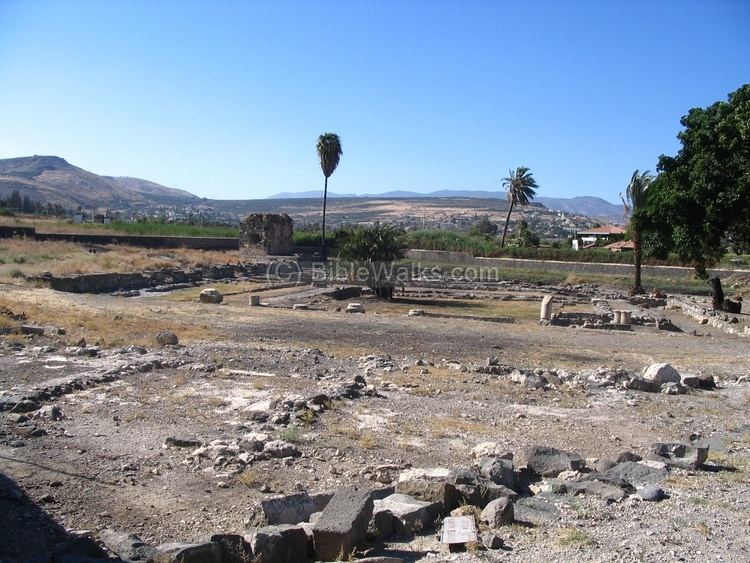Local time Friday 11:06 PM | ||
Weather 14°C, Wind N at 5 km/h, 73% Humidity | ||
Magdala (Aramaic: מגדלא / Magdala, meaning "elegant", "great", or "tower" (viz. "great place"); Hebrew: מגדל / Migdal, meaning "tower"; Arabic: قرية المجدل / Qariyat al-Majdal) is the name of at least two places in Galilee, mentioned in the Jewish Talmud and one place that may be mentioned in the Christian New Testament.
Contents

Discovery at magdala
Disputed location names

The New Testament makes one disputable mention of a place called Magdala. Matthew 15:39 of the King James' Version (KJV) reads, "And he [Ha Yeshua] sent away the multitude, and took ship, and came into the coasts of Magdala". However, some Greek manuscripts give the name of the place as "Magadan", and more recent translations (such as the Revised Version) follow this. Although some commentators state confidently that the two refer to the same place, others dismiss the substitution of Magdala for Magadan as simply "to substitute a known for an unknown place". The parallel passage in Mark's gospel[8:10] gives (in the majority of manuscripts) a quite different place name, Dalmanutha, although a handful of manuscripts give either Magdala or Magadan presumably by assimilation to the Matthean text — believed in ancient times to be older than that of Mark, though this opinion has now been reversed.
The Jewish Talmud distinguishes between two Magdalas only.

Miryam Magdalene

All four gospels refer to a follower of Jesus called Mary Magdalene, and it is usually assumed that this means "Mary from Magdala". There is no biblical information to indicate whether this was her home or her birthplace. Most Christian scholars assume that she was from the place the Talmud calls Magdala Nunayya, and that this is also where Jesus landed on the occasion recorded by Matthew.

While the name Mary Magdalene clearly is an integral part of Christian tradition, it is interesting to note that another Mariamme Magdala is historically attested - in fact she had a Tower named after her (the Magdala Mariamme). These towers were constructed by Herod b. Antipater (Herod "the Great") "... to the memory of three persons to whom he was most fondly attached, and after whom he named these towers - brother, friend and wife. The last, as we have previously related, he had for love's sake actually slain; the others he had lost in war ...." The Towers were ".... known as Phasæl, Hippicus, and Mariamme." It is clear already just who was this "Mary of the Tower", but to drive home the fact :- "The third tower, Mariamme - for such was the queen's name - ... " This particular "Mariamme Magdala" was none other than Herod's second wife, the Hasmonean princess Mariamme b. Alexander, whom he executed in 29 BC (BCE) for indiscretions [c.35-34 BC (BCE)] with his uncle Joseph. Titus b. Vespasian was so impressed with these Towers that he ordered them to be spared from the razing of Jerusalem.
Alternative names

Josephus frequently refers to a wealthy Galilean town, destroyed by the Romans in the Jewish War (66-73 AD (CE)) that has the Greek name "Tarichææ" from its prosperous fisheries. Josephus does not give its Hebrew name. Many authors identify this with Magdala Nunaiya - which refers to its "fish tower" for processing (drying) fish. It was also known in biblical times for flax weaving and dyeing. It was a major campaign camp/fortress of Josephus during the Jewish Wars.

Its reference in Matthew 15: 39 is, in some editions, given as "Magadan" ; and in Mark 8: 10 it is "Dalmanutha" . The site is known now as "el-Medjel" .
Excavations
Excavations at Magdala during 2007-8 were called The Magdala Project.
